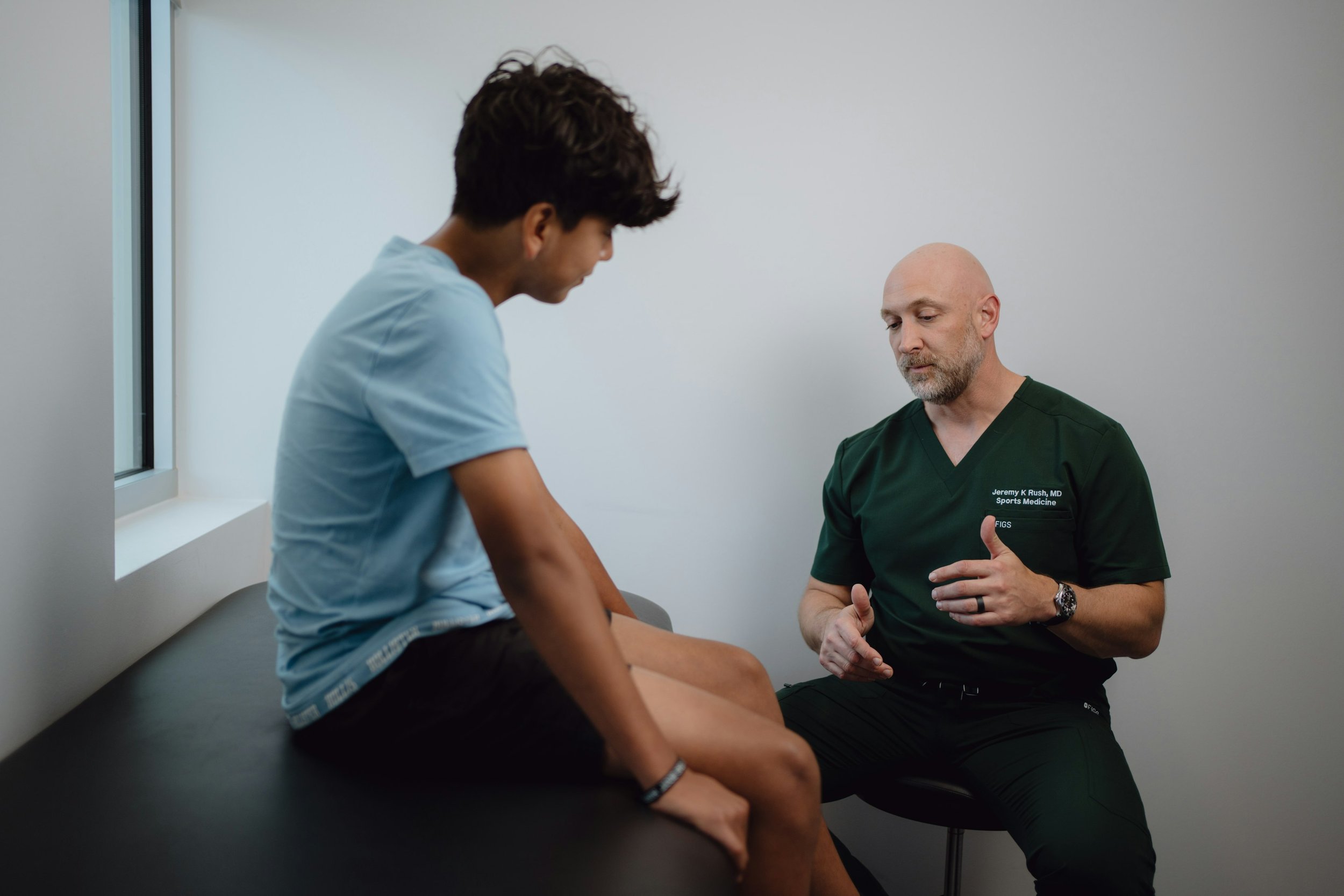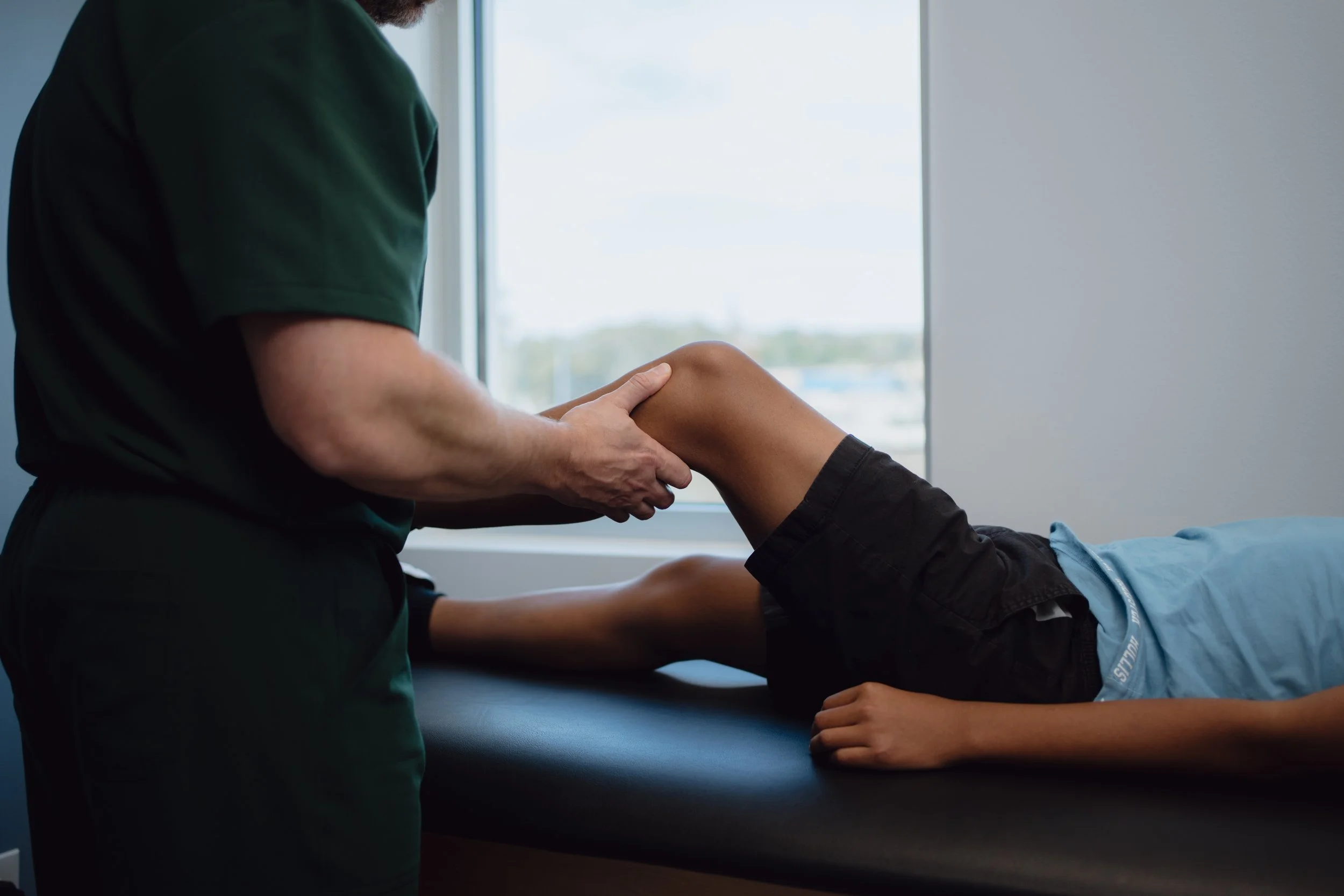
Anterior Knee Pain / Patellofemoral Pain Treatment in San Antonio
Understanding Anterior Knee Pain (Patellofemoral Pain)
Anterior knee pain, often referred to as patellofemoral pain, is a common complaint among athletes and active young individuals. This type of knee pain generally occurs around or behind the kneecap (patella) and can be aggravated by activities like running, jumping, or climbing stairs. Young athletes in sports such as basketball, soccer, and track are particularly at risk for developing this condition.
Dr. Jeremy Rush, San Antonio’s only dual-fellowship-trained orthopedic surgeon in pediatric orthopedics and sports medicine, specializes in treating knee pain in young athletes, helping them safely return to the sports and activities they love.
What Causes Anterior Knee Pain?
Anterior knee pain is often caused by overuse, improper alignment, or muscle imbalances that put stress on the knee joint. Below are some common causes of anterior knee pain:
Overuse or Repetitive Motion: Repetitive impact from sports like running or jumping can lead to patellofemoral pain due to stress on the knee joint.
Knee Alignment Issues: Poor alignment of the knee, patella, or surrounding muscles can cause pain and contribute to patellar instability.
Muscle Weakness or Imbalance: Weakness or imbalance in the quadriceps or hip muscles may lead to improper tracking of the kneecap, resulting in pain.
Trauma: Direct injury to the knee, such as a fall or collision, can cause acute patellofemoral pain.
Recognizing Symptoms of Anterior knee pain
Anterior knee pain can vary widely, from mild discomfort to significant pain that interferes with daily activities. Some common symptoms include:
Pain around or behind the kneecap, especially during activities like squatting, running, or climbing stairs
A feeling of knee instability or “giving out”
Swelling around the knee joint, especially after physical activity
Grinding or popping sensations when moving the knee
If you or your young athlete are experiencing any of these symptoms, consulting a specialist like Dr. Rush can help identify the underlying cause and provide targeted treatment.
Treatment Options for Anterior Knee Pain
Dr. Rush offers a variety of treatment options, both non-surgical and surgical, tailored to meet the needs of young athletes. His approach focuses on relieving pain, improving knee stability, and helping patients return to activity safely.
Non-Surgical Treatments
For many patients, non-surgical treatments are highly effective in managing patellofemoral pain. Dr. Rush’s non-surgical treatment options include:
Physical Therapy: Targeted exercises to strengthen the quadriceps, hamstrings, and hip muscles, as well as to improve knee alignment and function.
Activity Modification: Adjusting sports or exercise routines to minimize pain and allow for healing.
Bracing or Taping: Patellar braces or taping techniques to support proper kneecap alignment during activities.
Anti-Inflammatory Medications: Medications to help reduce pain and swelling as part of a comprehensive treatment plan.
Surgical Treatments
In rare cases where conservative treatments do not provide sufficient relief, Dr. Rush may recommend surgery. Surgical treatments are carefully considered and tailored to each patient’s unique condition:
Arthroscopy: A minimally invasive surgery to address cartilage damage or other structural issues contributing to knee pain.
Realignment Procedures: In cases of severe misalignment, Dr. Rush may perform a realignment procedure to correct the position of the patella and reduce pain.
Preventing Anterior Knee Pain in Young Athletes
-
Strengthening Exercises
Focus on building strength in the quadriceps, hamstrings, and hip muscles to support proper knee alignment.
-
Warm-Up and Stretching
Ensuring a thorough warm-up and dynamic stretching before exercise can reduce muscle strain.
-
Proper Footwear
Supportive, sport-specific footwear can help improve alignment and reduce knee strain.
-
Cross-Training
Including low-impact activities like swimming or cycling can help build endurance and reduce stress on the knees.
FAQs about Anterior Knee Pain
-
Anterior knee pain refers to pain located at the front of the knee, usually around or behind the kneecap. It’s common in active individuals, especially young athletes, and is often due to overuse, alignment issues, or muscle imbalances affecting the knee joint.
-
Anterior knee pain is frequently seen in young athletes and active people who engage in sports with repetitive knee motions, like running, basketball, and soccer. Muscle imbalances, alignment issues, and overuse can make athletes more susceptible.
-
Typical symptoms include:
Pain around or behind the kneecap, especially when squatting, climbing stairs, or running
A feeling of knee instability or a sensation that the knee might “give out”
Swelling or tenderness around the front of the knee
Grinding or popping sensations when moving the knee
If you have these symptoms, a specialist like Dr. Rush can evaluate and diagnose the issue accurately.
-
Diagnosing anterior knee pain involves a physical examination, reviewing symptoms, and sometimes imaging like X-rays or MRI. Dr. Rush will assess your knee’s alignment, stability, and range of motion to pinpoint the cause.
-
Surgery is only considered if conservative treatments don’t provide relief. Dr. Rush may recommend surgery if the pain is due to significant cartilage damage or severe alignment issues.
-
Yes, taking preventive steps can reduce the risk of anterior knee pain:
Strengthening the quadriceps, hamstrings, and hip muscles
Warming up and stretching before exercise
Wearing supportive, activity-specific shoes
Adding low-impact activities to reduce knee stress
-
If knee pain lasts more than a few weeks or interferes with daily activities, it’s time to see a doctor. Early diagnosis and treatment can prevent the condition from worsening and help you return to activity faster.
-
Recovery depends on the severity and treatment. With non-surgical care, patients may see improvement within a few weeks. Surgical recovery can take several months and may include physical therapy to restore knee strength and function.
-
Surgery is only considered if conservative treatments don’t provide relief. Dr. Rush may recommend surgery if the pain is due to significant cartilage damage or severe alignment issues.

Meet Dr. Jeremy Rush
Dr. Jeremy K. Rush, MD, FAAP, is San Antonio's only orthopedic surgeon who is Dual-Fellowship Trained in pediatric orthopedic surgery and sports medicine. He specializes in arthroscopic surgery of the knee, shoulder, elbow, and ankle, as well as the treatment of fractures and other injuries in young athletes.


